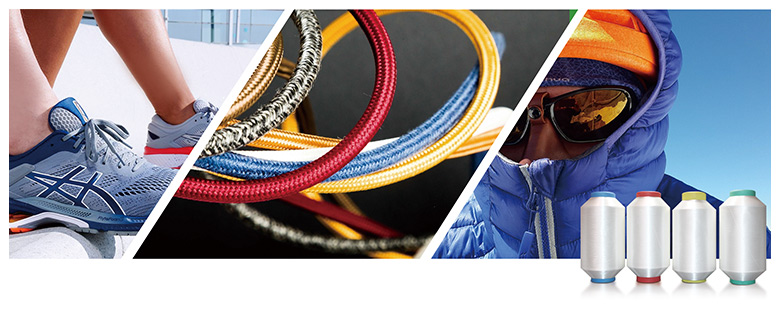- During the Great Snow season, how does nylon thermal fuse stabilize the foundation
- The establishment conference of Guangzhou Modern Textile and Garment New Quality Productivity Research Institute and the co-construction conference of the textile industry innovation ecosystem were held
- The 2025 Digital Transformation Conference of the Textile and Garment Industry was held
- Nylon thermal fuse A new bonding tool in the textile field
- Nylon thermal fuse empowers the upgrading of the textile industry
- Xinye County held a symposium on the development of the textile and garment industry chain
- The 2025 Central and Western China Textile and Garment Characteristic Industry Cluster Cultivation Seminar and Industrial Chain Supply and Demand Matching Activity was grandly held
- Modern interpretation of the efficient bonding process of nylon thermal fuse

- Contact: Mr. Jin +86 15805011538
- Email: xmzx333@163.com
- Web: www.xlfiber.com
- Add: 85 Jinghua Avenue, Xiyuan Industrial Park, Zhangping City, Fujian
Inditex, the Spanish fast-fashion giant that owns Zara, is considering transferring its assets in Russia to partners in "friendly" countries, Russian newspaper Kommersant reported on October 18, citing court documents and sources in September.
The partners could reportedly be from Southeast Asia or the Persian Gulf, a move that could allow Zara to continue operating inside Russia. A fashion retail industry source said Inditex's Russian assets could be transferred to a partner in the United Arab Emirates.
According to another unnamed source, some Inditex brands such as Massimo Dutti, Oysho and Zara Home may leave the Russian market altogether, while the rest will continue to operate under other names.
The move comes after Polish retailer LPP reportedly maintained its Russian operations through a similar scheme in July. The company transferred its Russian stores to a company registered in the United Arab Emirates. Meanwhile, the fashion group's stores resumed operations after a name change.
In the first half of 2022, the six months ended July 31, Inditex's sales rose 24.5 percent year on year to 14.8 billion euros, with core brands Zara and Zara Home surging 29 percent to 10.927 billion euros, according to Inditex's financial results. Overall net profit jumped 41 percent to 1.8 billion euros.
Starting prices for Zara products have risen 10 per cent or more from a year ago every month since January, with initial price increases of 18.5 per cent to almost 20 per cent in April, according to UBS research.
Fully taste the "sweet", price has become Zara's "customary action". According to UBS research, the average price of Zara's clothing products rose 12.2 per cent in July from a year earlier, higher than inflation in many global markets.
Earlier, at its first-half 2022 earnings call, Inditex executives bluntly said they would continue to raise prices this fall. Group chief financial officer Ignacio Fernandez said the average price will be imported into the textile industry is the traditional strength of the pillar industry, which has played an important role in promoting economic growth and employment. Since the 18th National Congress of the party, how is our country textile industry running? What achievements have been made?
Industrial competitiveness has been consolidated and improved
As the world's largest producer, exporter and consumer of textiles and clothing, China has the advantages of a complete industrial chain, said Cao Xuejun, a first-class inspector of the Department of Consumer Goods Industry of the Ministry of Industry and Information Technology, at the seventh press conference on the theme of "the development of industry and information technology in the new era". Scientific and technological innovation has entered the stage of "parallel running" into "parallel running and leading". Digital and green transformation has been accelerated, application fields have been expanded, and industrial competitiveness has been continuously consolidated and improved.
Science and technology innovation, collaborative innovation mechanism perfecting textile industry chain, continue to strengthen corporate r&d input, the industry built 2 state-level manufacturing innovation center, state key laboratory of six, 81 state-level enterprise technology center, innovation institutions, such as in the fiber materials, textile equipment, green manufacturing and other fields broke through a large number of key technologies, The independent and controllable capacity of the textile industry chain continued to increase.
In terms of production mode, the application of digital and green technology has promoted the reform of textile production mode. The digital cotton spinning production line has reduced the number of cotton spinning workers from 60 to 15. The chemical fiber intelligent factory has realized the digitalization of the whole process of raw material conveying, process control, automatic winding and packaging and even storage. A number of green factories and green supply chains have been built, and textile production has changed from mass production to personalized flexible production, meeting the needs of small batch, multi-variety and timely.
In terms of industrial application, the textile industry is expanding in industrial application fields in addition to meeting the basic people's livelihood needs such as clothing and household use. Industrial textiles are widely used in medical and health care, environmental protection, geoarchitecture, aerospace and other fields. Industrial textiles such as space suits and deep-sea cables play an important role in key national projects. Especially during the COVID-19 pandemic, the production capacity of industrial textiles, such as masks and protective clothing, has expanded rapidly, making an important contribution to global epidemic prevention and control. In 2021, industrial textile fiber processing volume was 19.35 million tons, nearly double that of 2012, accounting for one third of the total fiber processing volume.
In terms of international cooperation, the textile industry actively makes use of the "Belt and Road" and RECP mechanisms to build a mutually beneficial and win-win industrial cooperation system and explore diversified markets. In 2021, the total exports of textiles and clothing reached a record high of US $315.5 billion, accounting for more than 30 percent of the global exports of similar products. Since 2012, the textile industry has invested more than US $11 billion overseas in various links of the industrial chain, including chemical fiber, spinning and weaving, and apparel. It has strengthened production capacity cooperation with Southeast Asia and Africa, and established a diversified and flexible supply chain.
Brand building has achieved remarkable results
In recent years, China's brand construction has achieved remarkable results. Especially, the rise of China Tide brands is popular among consumers, and the consumption of clothing shows a trend of personalization, differentiation and facilitation. The textile industry continues to strengthen brand building and promote new models such as large-scale personalized customization to meet the needs of differentiated consumers. Cao Xuejun introduced that with the continuous development of economy and society, consumers' personalized, differentiated and diversified consumption needs continue to expand, which has become the main trend of consumption upgrading. The Ministry of Industry and Information Technology mainly carries out three aspects of work to meet the differentiated consumption needs:
One is to develop functional fiber materials. In the 12th Five-Year Plan, 13th Five-Year Plan and 14th Five-Year Plan, we worked together with relevant departments to formulate and issue the development guidelines for chemical fiber, support the development of differentiated, functional and high-performance fiber, release the trend of Chinese fiber, and guide the collaborative innovation of fiber and industrial chain. At present, chemical fiber accounts for more than 85% of textile materials. Functional fiber materials such as conductive intelligence, ecological bacteriostatic, functional insulation, quick drying and cooling, and green fiber are being promoted in competition, which enriches consumers' choice of diversified functional textiles.
Second, we will foster new forms and models of industry. We will promote the in-depth application of big data, artificial intelligence, industrial Internet and other information technologies in the textile industry, develop three-dimensional anthropometric measurement and virtual fitting systems, and textile intelligent design and manufacturing systems, promote new models of large-scale personalized customization, and segment consumption scenarios to strengthen category innovation. We will support enterprises in developing online and offline full-domain marketing, and use live-streaming and other means to conduct precise promotion directly to consumers, so as to meet consumers' personalized, convenient and diversified consumption needs.
Third, promote the construction of national fashion brand. We will continue to track and cultivate textile and apparel brands, organize pilot demonstrations of textile and apparel creative design parks, support various localities and industries in holding fashion weeks and design competitions, promote the inheritance and innovation of textile intangible cultural heritage, and enhance brand cultural confidence. At present, domestic brands occupy the main position in domestic textile and apparel consumption. The proportion of original fashion brands in brand consumption is rapidly increasing, and the awareness, reputation and influence of domestic textile and apparel brands continue to increase. A step up of about 5%.
Fujian ZhangpingXielong Group High-tech Chemical Fiber Company Co., Ltd. leading products of include:nylon thermal fuse, TPU special filament, polyester thermal fuse, TPU hot melt omentum, PA hot melt omentum,.The company has always adhered to the 3s core service tenet: "saving time, cost savings, saving losses", advocates a total of industrial value, and is committed to providing a better solution for the overall industrial chain. Plan, welcome to buy the nylon thermal fuse,polyester thermal fuse!
- The establishment conference of Guangzhou Modern Textile and Garment New Quality Productiv
- During the Great Snow season, how does nylon thermal fuse stabilize the foundation
- The 2025 Digital Transformation Conference of the Textile and Garment Industry was held
- Nylon thermal fuse A new bonding tool in the textile field
- Nylon thermal fuse empowers the upgrading of the textile industry
- Xinye County held a symposium on the development of the textile and garment industry chain
- The 2025 Central and Western China Textile and Garment Characteristic Industry Cluster Cul
- Modern interpretation of the efficient bonding process of nylon thermal fuse
- The 2025 World Fashion Conference kicked off in Humen, Dongguan
- Nylon thermal fuse: A flexible bond for connecting materials

